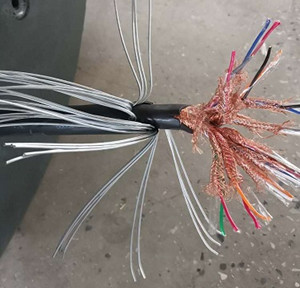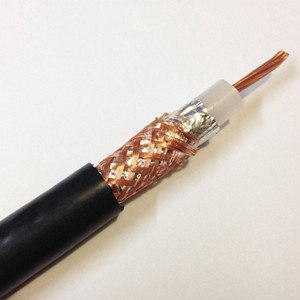Telecommunications cables are transmission lines of electrical signals and are an indispensable transmission medium in various electronic systems. Computer cables are mainly used for electronic computers with high interference protection requirements and automated connection cables. The two have both differences and similarities.
1. What is a computer cable
Computer cable products are suitable for electronic computers and automated connection cables with rated voltages of 500V and below. The insulation of the cable ground core is made of K-type B low-density polyethylene with oxidation resistance. Polyethylene has high insulation resistance, good withstand voltage, small dielectric coefficient, dielectric loss temperature and variable frequency, which not only meets the requirements of transmission performance, but also ensures the service life of the cable. 1
In order to reduce mutual crosstalk and external interference between loops, the cable adopts a shielded structure. The shielding requirements of cables are to use: twisted combined shielding, general shielding of twisted cables, and general shielding after twisted combined shielding according to different occasions.
The shielding materials include round copper wire, copper tape, aluminum tape/plastic composite tape. The shielding pair has good insulation performance with the shielding pair. If a potential difference occurs between the shielding pairs of the shielding pairs in use, the signal transmission quality will not be affected.
Computer cable models include DJYPV, DJYVP, DJYPVP, DJYP2V, DJYVP2, DJYP2VP2, DJYP3V, DJYVP3, DJYP3VP3, DJYPVR, DJYVPR, DJYP2VR, DJYVP2R, DJYP2VP2R, DJYP3VR, DJYP3VR, DJY VP3R, DJYP3VP3R, DJYPV22, DJYVP22, DJYPVP22, DJYP2V22, DJYP3V22, etc.
2. Computer cable technical parameters
The ambient temperature during laying shall not be lower than: fixed laying -40℃, non-fixed laying -15℃
Minimum bending radius: The armorless layer should not be less than 6 times the outer diameter of the cable, and the cable with the armored layer should not be less than 12 times the outer diameter of the cable
At 20°C, the insulation resistance should not be less than 2500MΩ·Km after stable charging for 1 minute.
There should be constant paths between each pair of twisted shield and between the pair of twisted shield and the total shield
The cable core and the wire core and the shield should be subjected to 50HZ, AC 2000V voltage test for 5 minutes without breaking through
3. What is a telecommunications cable
Transmission line of electrical signals. It is an indispensable transmission medium in various electronic systems. Telecommunications cables are used in all fields of electronic technology.
Telecommunications cables are generally composed of conductors, insulation, shielding, protective layer and armor.
There are many types of telecommunications cables, which can generally be classified according to structural characteristics, frequency of use, insulation form, laying method and protective layer form.
From the structure, there are two categories: symmetrical cables and coaxial cables;
From the frequency of use, it can be divided into three types: low frequency, high frequency and radio frequency;
In terms of insulation form, it can be divided into solid core insulation, hollow insulation and semi-air insulated cables;
From the laying method, it can be divided into overhead, buried, pipeline and submarine cable;
In terms of sheath, it can be divided into lead bags, aluminum sleeves, plastic sheaths and comprehensive sheath cables.

There are mainly the following types of commonly used communication cables:
⑴. Municipal communication cable product model:
HYA HYV HYAV HYAC (Self-supporting) HYAT (Pulse) CPEV CPEV-S
⑵. Product model of special communication cables for coal mines:
MHYA(PUYA) MHYV(PUYV) MHYAV(PUYAV) MHYVR(PUYVR)
⑶. Shielded communication cable:
HYVP HYAP MHYVP MHYVP MHYVRP RVSP (Shielded twisted pair)
⑷. Armored communication cable:
HYA53 MHYA32 MHYV22 MHYAV22 MHYAV32 HYAT53 HYV22 HYV32 HYA32
HYV53 HYVP22 HYAP22 HYAP32 MHYVP22 MHYVP32 MHYVRP22 MHYVRP32
⑸. Flame retardant communication cable:
ZR-HYA ZRA-HYA ZA-HYA ZRC-HYA WDZ-HYA ZR-YJYR [1]
There are mainly the following types of commonly used coaxial cables:
·RG-8 or RG-11 50Ω
·RG-58 50Ω
·RG-59 75Ω
·RG-62 93Ω


